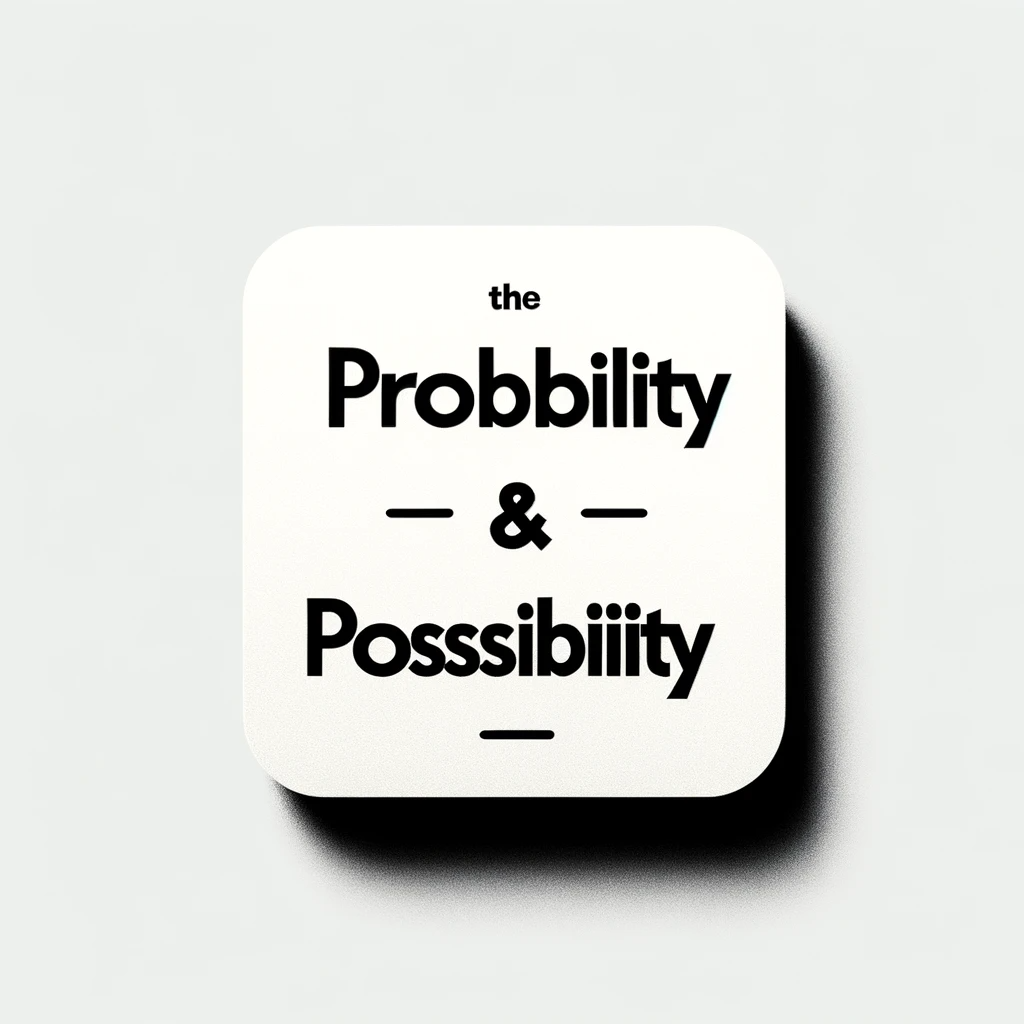私のような分析屋にとって、プロバビリティとポシビリティの意味の違いを理解することはとても大切です。
なぜならクライアントが経験則や感覚で表現するポシビリティを分析によってプロバビリティとしてアウトプットする必要があるからです。
プロバビリティ(確率)は、ある事象が起こる可能性の度合いを数値で表したものです。0から1までの間で表され、0は絶対に起こらないことを、1は絶対に起こることを意味します。
一方で、ポシビリティ(可能性)は、ある事象が起こるかどうかの質的な評価を意味し、特定の数値で表されることはありません。これは、ある事象が理論的に起こり得るかどうかを指すより広い概念です。
簡単に言うと、プロバビリティは「どれくらいの確率で?」という数値的な測定に関わり、ポシビリティは「起こり得るか?」ということの可能性についての一般的な考えを指します。
統計的な分析から、プロバビリティ(確率)を使用して、観測されたデータから事象の発生頻度やパターンを推定します。
この数値的なアプローチによって、予測や意思決定に役立つ情報を提供するというわけです。
“The Close yet Distant Concepts of Possibility and Probability”
“For analysts like me, understanding the difference between probability and possibility is crucial.
This is because there’s a need to translate the possibility expressed by clients through experiential rules or intuition into probability through analysis.
Probability quantifies the likelihood of an event occurring. It’s represented numerically between 0 and 1, where 0 means an event will definitely not happen, and 1 means it definitely will.
On the other hand, possibility is a qualitative assessment of whether an event could occur, without being represented by a specific number. It’s a broader concept that refers to whether an event can theoretically happen.
In simple terms, probability deals with the question, ‘What is the likelihood?’ measured numerically, while possibility addresses the more general idea of ‘Can it happen?’
In statistical analysis, we use probability to estimate the frequency and patterns of events from observed data.
This numerical approach provides valuable information for prediction and decision-making.

